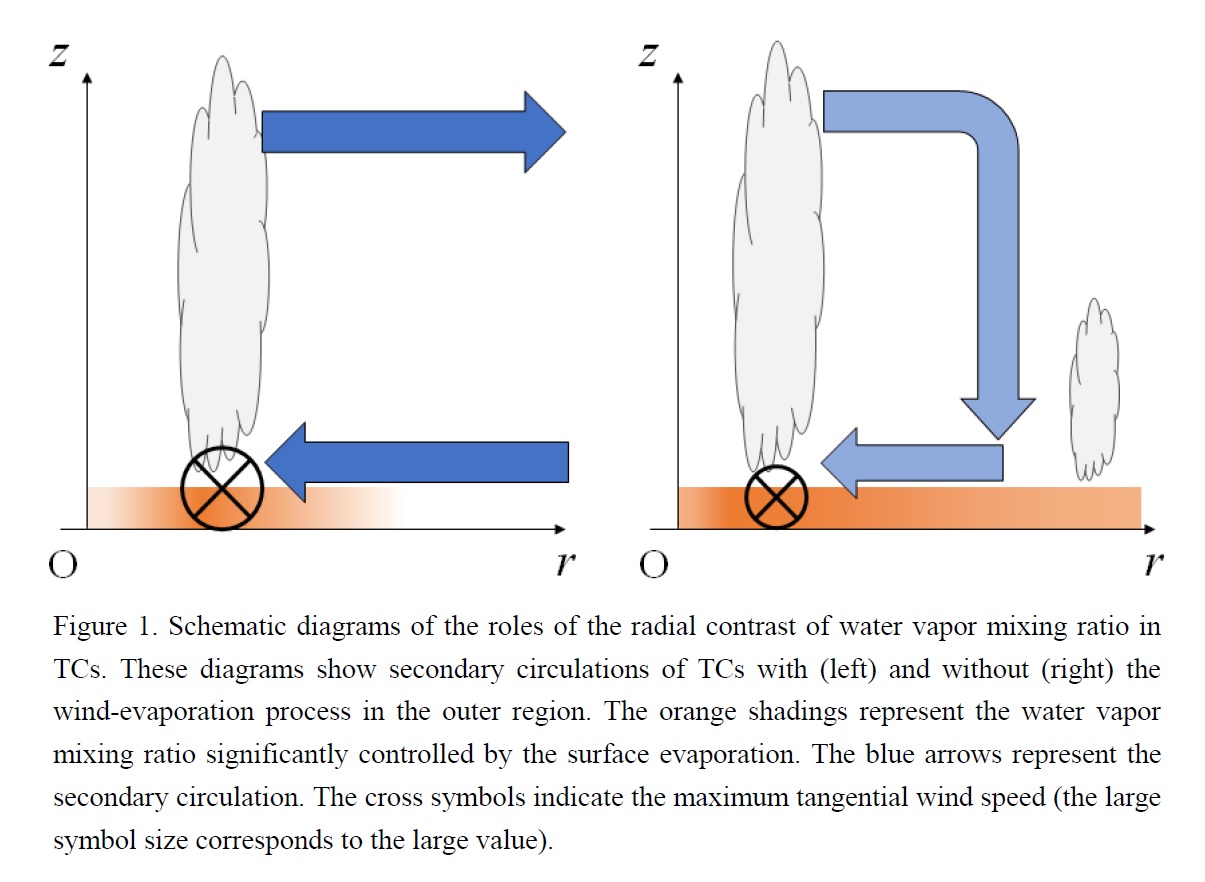Graphical Abstract
Aono, K., T. Iwasaki, and T. Sasai, 2020: Effects of wind-evaporation feedback in outer regions on tropical cyclone development. J. Meteor. Soc. Japan, 98, 319-328.
https://doi.org/10.2151/jmsj.2020-017
Graphical Abstract
Plain Language Summary: Tropical cyclone (TC) intensification is widely understood according to the wind-evaporation feedback. In the conventional framework, many authors have discussed the increase of sea surface evaporation as the surface wind increases near the eyewall. On the other hand, we discuss the surface evaporation decrease as the wind speed decreases in the outer region. Idealized numerical experiments showed that the increased surface evaporation in the outer region significantly weakens the TC and reduces its size. The radial contrast is suggested to have more importance for the TC organization than the water vapor mixing ratio itself. This is a very different interpretation of the wind-evaporation feedback on TC development from the conventional idea.
Highlights:
- The experiments set a lower limit of wind speed used in the parameterization of evaporation coefficient from the sea surface to suppress the wind-evaporation feedback in the outer region.
- Although the modified scheme significantly increases water vapor mixing ratio in the outer region of TCs, it weakens TCs, reduces their sizes, and delays the onset of rapid intensification.
- The findings suggest that the formation of radial contrast of water vapor concentration is vital for the wind-evaporation feedback in the TC organization.







